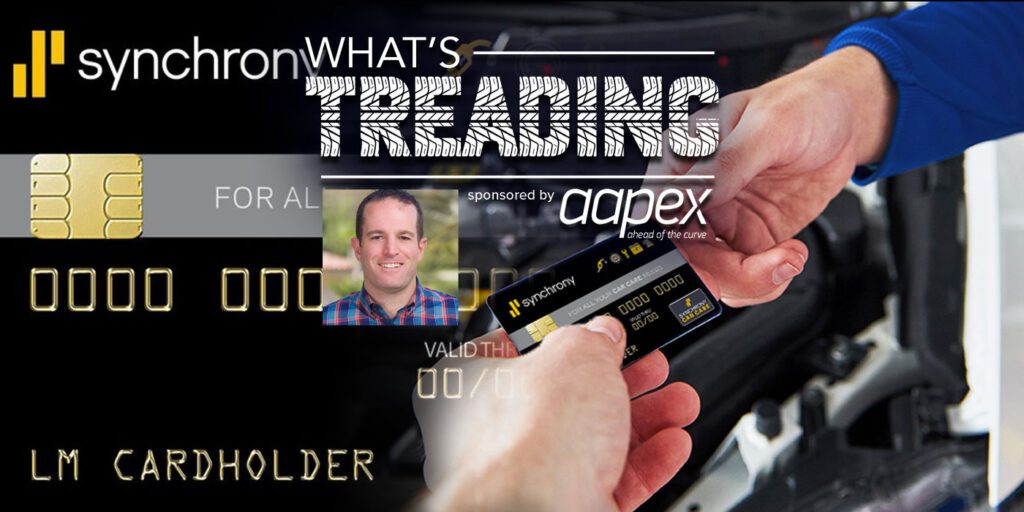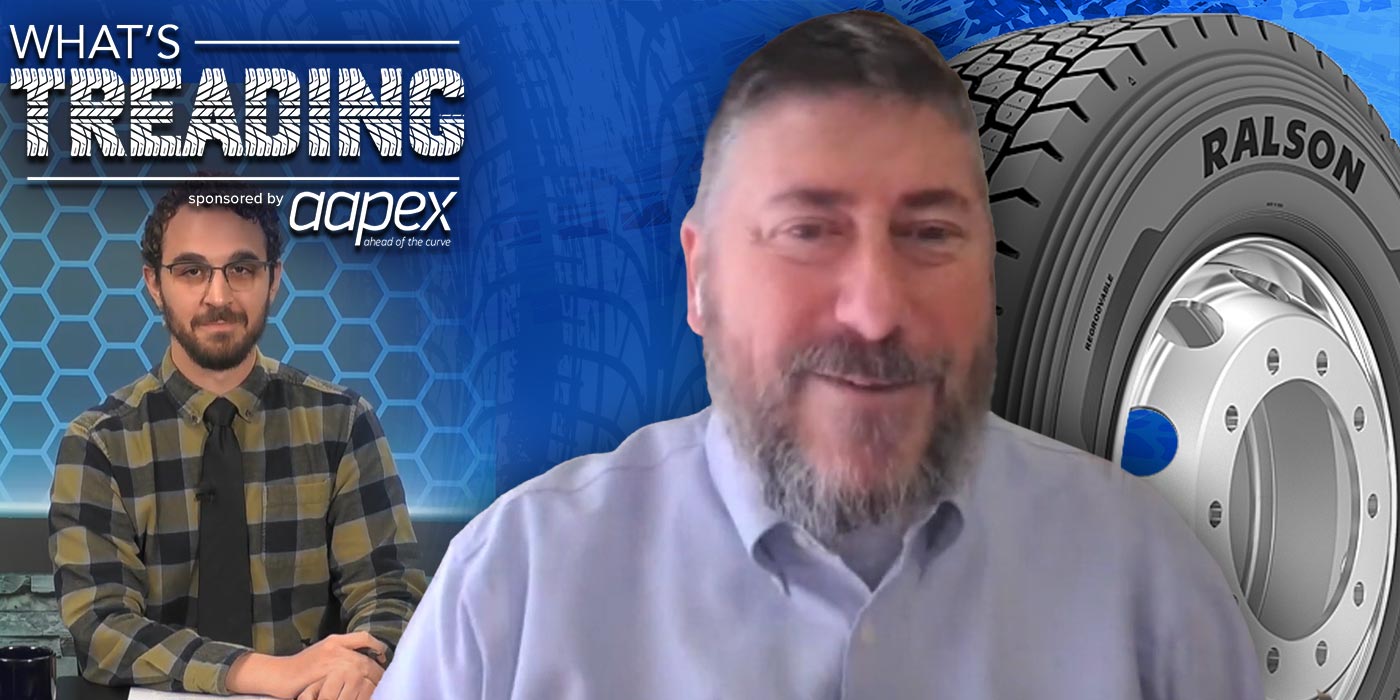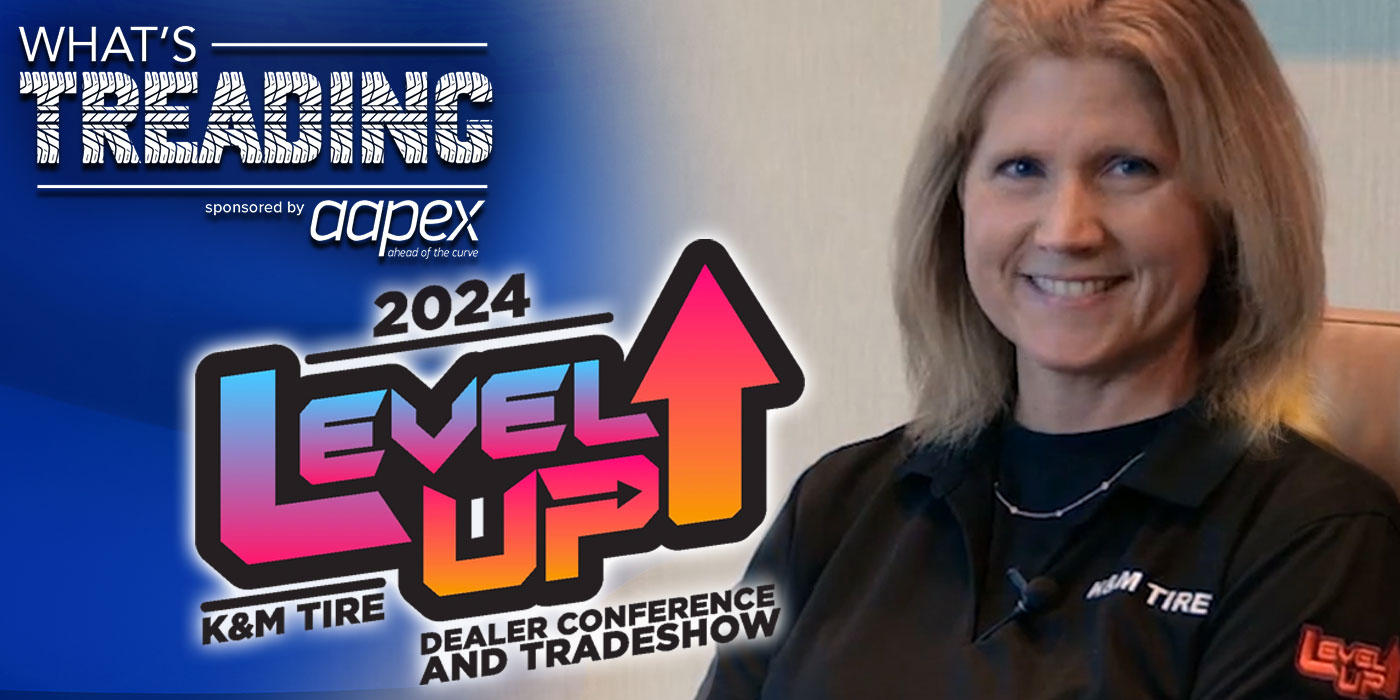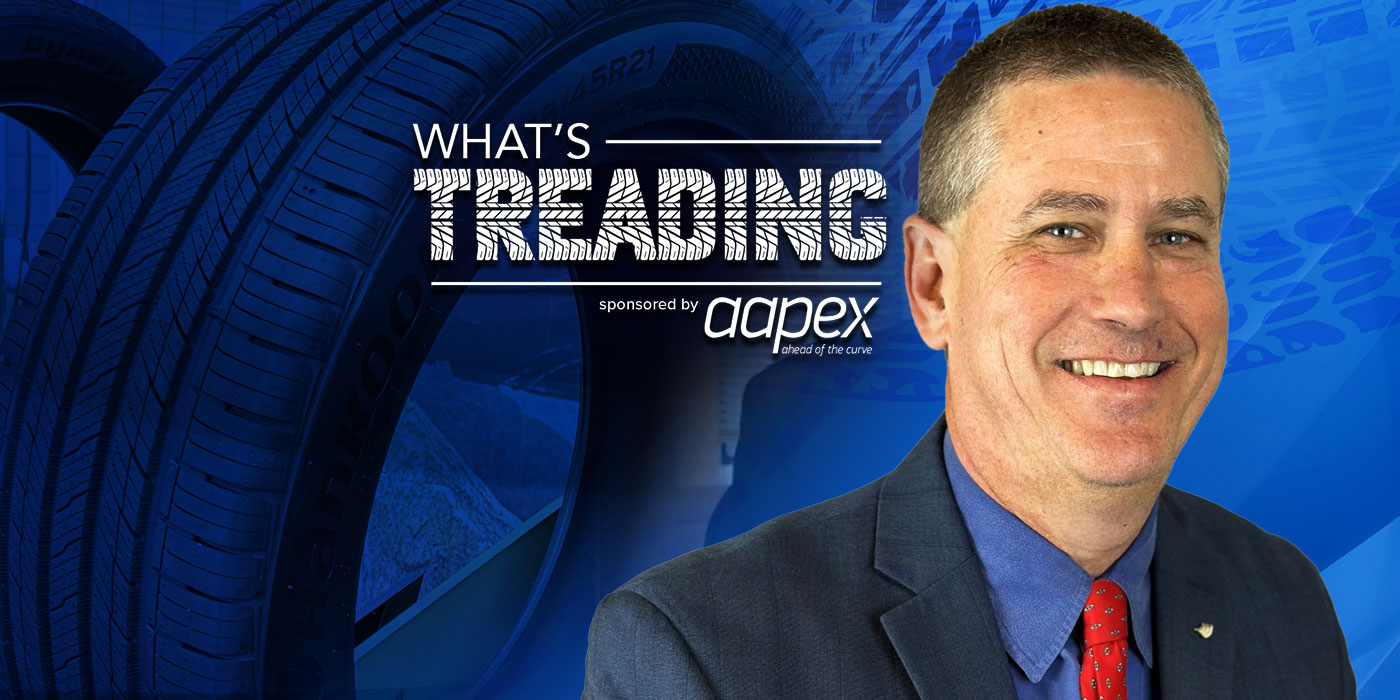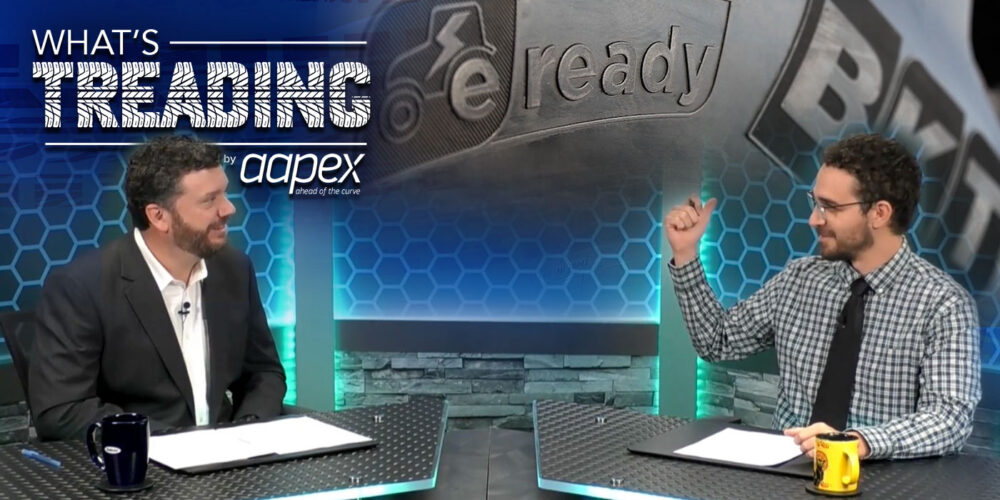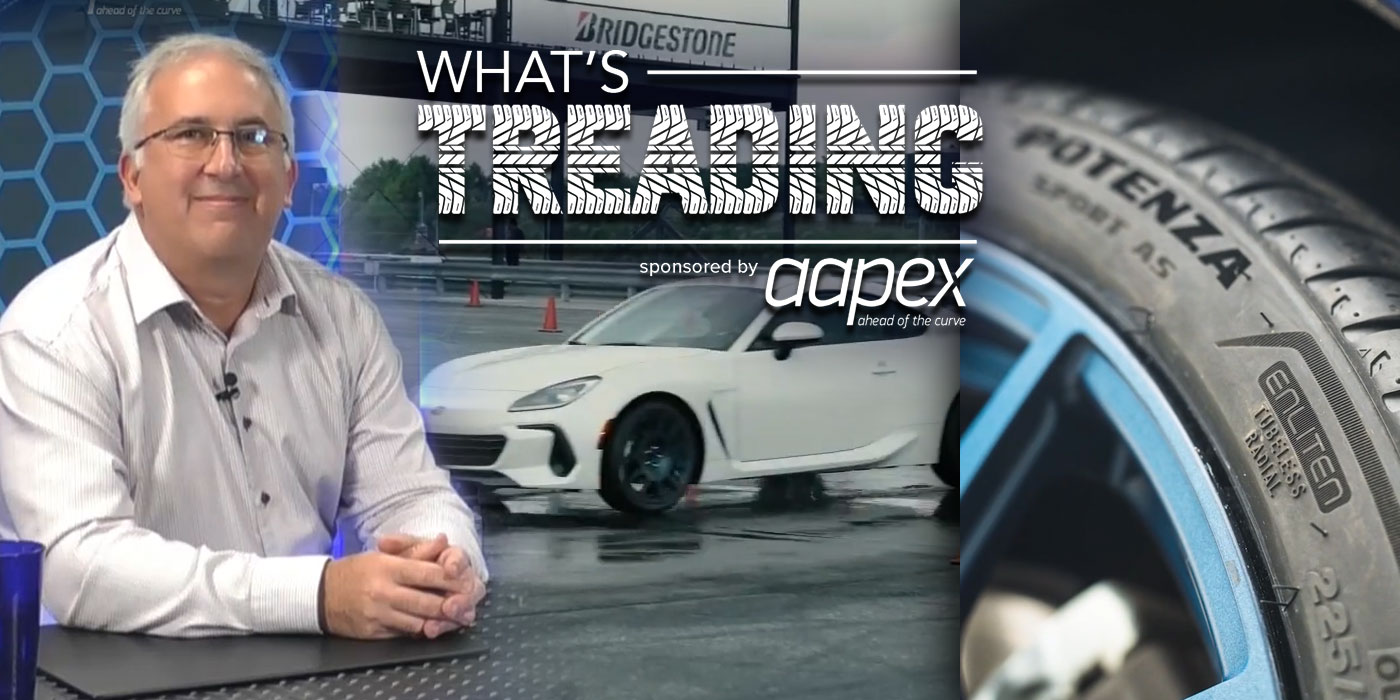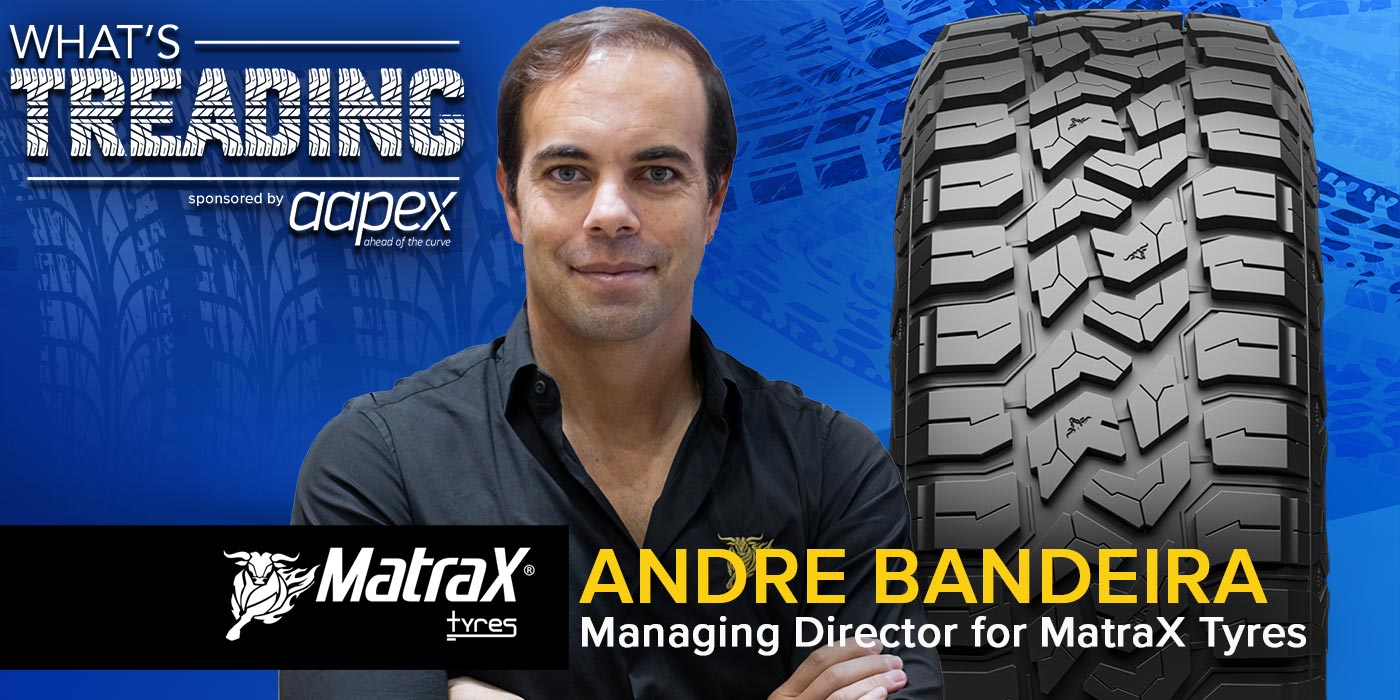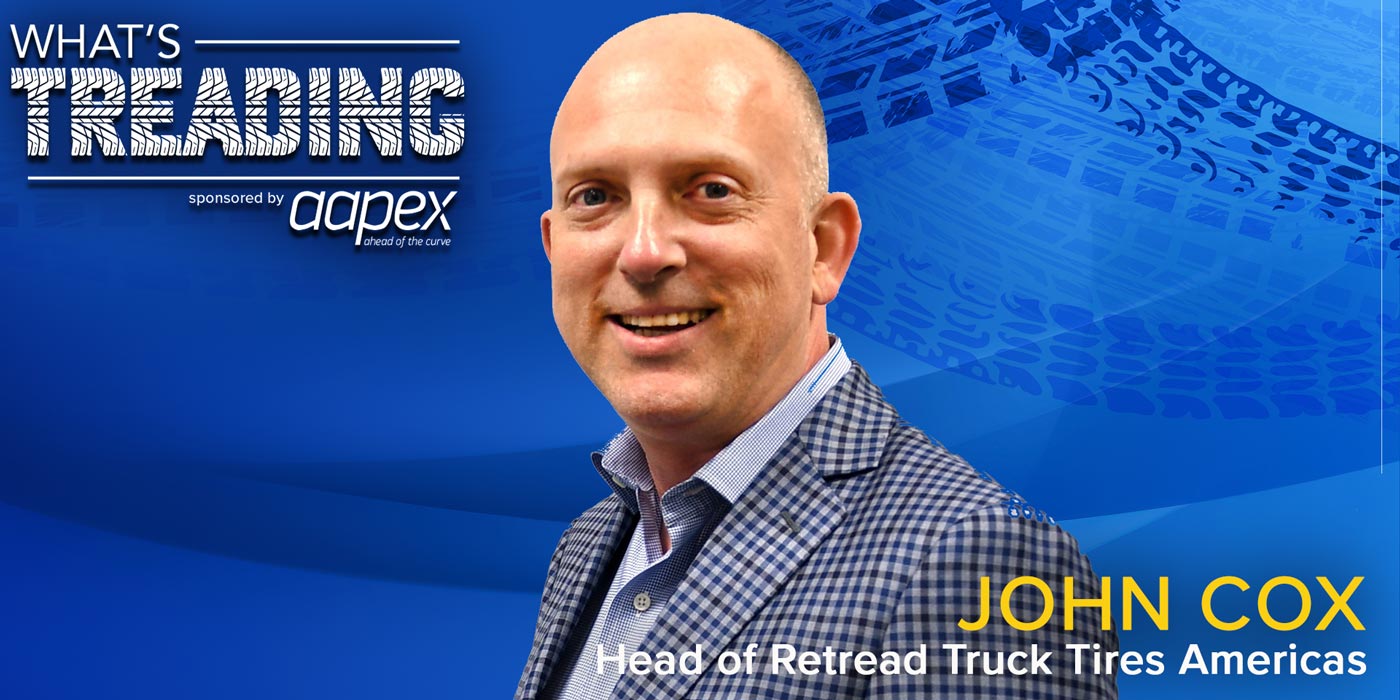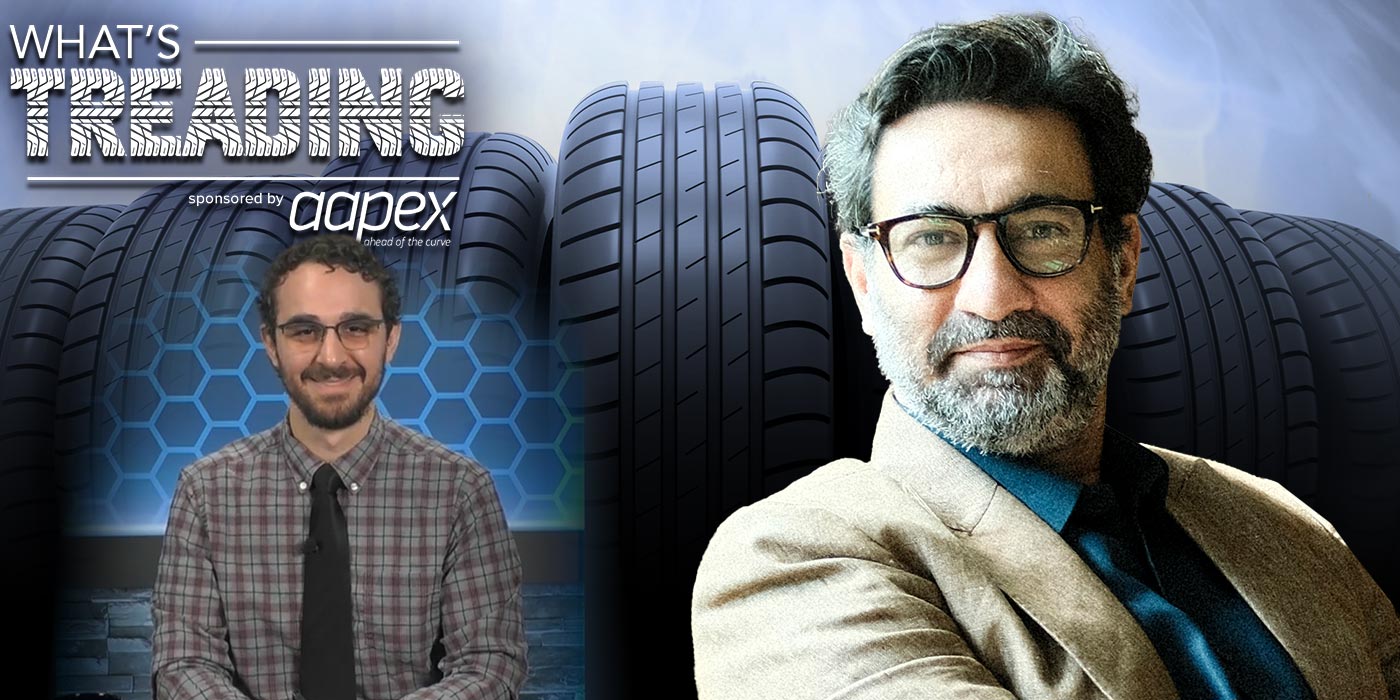The way consumers shop for tires has evolved over the years–you’re probably installing more tires from an online purchase than ever before and having conversations with customers who know (or think they know) what tires they need on their vehicle, thanks to the endless amount of information at our fingertips. The pandemic shifted consumers’ digital habits into high gear, and according to Synchrony Financial, a dealer’s digital presence is impacting the customer’s buying experience in a big way.
To dig into how this is happening, we dive into Synchrony’s latest data around major automotive purchases–those of which include tires. In this episode of What’s Treading with Tire Review, presented by AAAPEX, we’re joined by Keith Mait, senior vice president and general manager, auto, oil and gas of Synchrony Financial. Keith explains how consumer buying behavior around major automotive purchases is changing and how dealers can be prepared with financing their customers may need.
CLICK HERE to listen to the episode.
Subscribe to the audio podcast on Apple Podcasts, Spotify and Google Podcasts. You can also read the full interview below or watch the video version of this podcast on YouTube.
EPISODE OVERVIEW:
- Synchrony Financial’s auto, oil and gas division and how consumer spending is different in the auto repair space (0:45)
- How automotive consumers are saving for planned and unplanned expenses and the buying behaviors that changed as a result of the pandemic (1:51)
- The importance of mobile devices in the buying journey and how the digital experience translates to the in-store experience (5:15)
- Changing expectations of an automotive consumer’s in-store experience and 79% of automotive purchases still happen in-store (9:06)
- Services Synchonry provides that help bridge the gap between the digital and in-store experience when it comes to consumer financing (12:53)
- How automotive customers are using consumer financing in a post-pandemic world and how dealers can make it more seamless for their customers (15:50)
- Why the power of choice in how consumers pay for their automotive and tire service bring repeat business (18:46)
Watch this episode above, on our YouTube channel or listen to it on Apple Podcasts, Spotify and Google Podcasts. Not a fan of watching the episode? Read the full interview below.
MW: Synchrony recently conducted its Major Purchase Journey Study, which reports on consumer behaviors around major purchases like tires. Can you tell me some ways in which Synchrony found that consumer buying habits changed during the pandemic as well as a bit of background on why the survey is conducted?
Keith Mait, SVP & GM, Oil and Gas, Synchrony Financial: Sure. Let me give you a little bit of background on Synchrony. Synchrony Automotive, Oil & Gas is part of the broader Synchrony Financial We offer the Synchrony Car Care Network credit card. In many cases, that’s branded with our partner’s logo and offers promotional financing to help with the affordability of these purchases. On a regular basis, we conduct major purchase studies to try and figure out what is driving the decisions behind consumers’ buying habits.
In the auto space, things are a little different because you have the planned and you have the unplanned. And so what we found during the pandemic is that for the unplanned consumer– those of us driving on the road and we encounter something that could be a flat tire or…an accident or something like that- relied on a referral or guidance from their insurance company or simply where they’ve been to in the past. We always recommend people take some thought and time to figure out what [a repair] is going to cost them, how long it’s going to take, how they will afford it, etc. For those activities, our card is there as a way to help them overcome that unplanned expense. We’ve all been there, and we know the stress that generally comes with it. Our goal is to help things become more affordable for the planned activities.
We find that our consumers are just so much more well-educated. They’ve spent a lot of time in advance understanding what they need, where they’re going to get it, how much it should cost, and what their options are for affording it. So, what we’ve, honed in on is the choice that consumers have in a planned experience is their currency. That is what they’re using to go and determine what is the most flexible, affordable, convenient, and quality that they want, given they now have that currency to spend. That’s how we’ve seen things evolve over the last two and a half years. We believe that through the ways that we help small businesses offer affordability we have the most compelling offering in the market today.
MW: So you’re saying consumers now more than ever are more planned and more researched with their planned purchases?
KM: They are very much planned. Our studies indicate that they spend months of time ensuring that they understand that they’re going to a place that’s very reputable and that’s offering them the fairest deal.
MW: I know a lot of tire dealers at least that we’ve been talking with recently, some of our Top Shops are Synchrony customers, and they’ve praised consumer financing for helping customers when they have that unplanned expense. But a lot of technology in the entire industry revolves around inspections, too. So, more people are being able to plan for a tire expense down the line when they have something like 6/32nds of tread depth.
You were saying, too, that with these planned purchases, the study found that a lot of people start their purchasing journey on their phones now, too. Can you go into the data around that?
KM: So, people were starting their purchases on their phones before the pandemic, but it wasn’t happening at the frequency that it is now.
What we now find is that close to two-thirds, or 64% of consumers, are planning their purchases on their phones today versus two years ago. It’s up nearly 24%, which is quite a considerable leap. The entire experience is starting online, but it’s still finishing in the store and we can’t lose sight of that. Nearly 79% of our consumers will still visit the store location while they’re making their purchase decision.
They’re starting on their phone, but they’re absolutely taking into account the physical presence of the store, the cleanliness, the location, the hours, and more importantly, this is the thing that we’re trying to ensure our small and mid-size business partners understand, is ensuring that the experience you get on the phone aligns with the experience you get in the store.
MW: Speaking of in-store, the data revealed that being physically present is still important. So can you go into some of the data around the in-store experience that Synchrony found with this study?
KM: In our automotive research, the findings have confirmed that the in-store experience is vital. The digital presence is where they’re starting, so, as we talked about that comfort level of being able to connect the dots from a mobile to an in-store experience, that in-store experience needs to remain inviting, it needs to remain comfortable, but it’s serving as a lead generation of what happens digitally. You want that continuity in store with your associates and with your managers to pick up on where your digital presence left off. Where you spend some time on your phone trying to figure out when can I come in, when does it work for me, confirming that appointment, then going in there and making sure that they acknowledge and represent that you’re next.
What we’ve also done with the in-store experience that leans back on the digital side is we’ve tried to give consumers more knowledge in advance of the affordability of the service that they’re trying to get done. When the dealership or garage conveys an estimate of some sort, we’ve created technologies that give consumers the ability to apply for credit in advance using hard-pull technology that hits their credit score or pre-qualifies them for credit in advance, which takes a softer element and doesn’t leave an imprint on their credit score. Whatever the consumer’s choice is, they have that ability with Synchrony Car Care and our automotive partners to execute. No matter what that consumer’s credit history is if they’re in need of credit or their credit history is thinner, they have the ability to test the waters with pre-qualification technology.
That all can translate in-store, but they’re doing it on their own device. They’re doing it in the comfort of their home. They’re not sharing their personal information with a stranger when they qualify on their mobile device. They walk in and they say, “Here’s my account number.” Then, the store associates can access the credit information on our Synchrony portals or through our integrated technology and complete the transaction as if the whole thing had happened in the store.
One more element to it that offers more personalization and customization to our small- and medium-sized business partners is we provide each one of them with their own custom link that they can put on their websites to demonstrate and point to their customers to say I just provided you with this estimate, go to our website, click on that link, and that will give us direct access to what you just applied for. You come in, we can see exactly what you’re approved for without having to waste any of your time. As you’re aware, and I’m sure many of your readers and your viewers deal with on a daily basis, we operate with thousands of independently owned and franchised stores, merchants and dealerships. Tens of thousands and us providing a generic to a big pot of data isn’t going to help these small businesses manage their business in a unique way. So we’ve gone that extra step, and we’ve provided these small merchants with independent and unique links that they can use inside their stores or on their websites to help make that process more seamless or more user-friendly, or more importantly, since COVID and the pandemic, contactless.
MW: In talking about these major purchases that people go through especially in the automotive industry, tires is one. What did the study find out about how people are using consumer financing nowadays, specifically when making these large automotive purchases?
KM: So the last two and a half years have just been complicated. When we started in the spring of 2020, and the months after that, we all as consumers in the United States began to receive and feel like there was more stimulus in the system. There was more available cash flow. We weren’t traveling as much, we were saving more. There was more sort of money to spend, so to speak. The needs for credit for a variety of things were varied. You had your planned activities, but the desirability to be a healthy consumer and treat your debt in the right and responsible way was paramount, right? Fast forward to today, when there is no more stimulus. People are very much back to work in some cases in offices.
All the stores are open. But, we’re under considerable stress due to external factors like inflation or supply chain challenges, and those savings rates and stimulus dollars have since been depleted or reduced. Now, people are starting to have to rely on the need to create more affordable and attainable budgets and think a little more about planning in advance for some of these unplanned or planned experiences. What we’ve seen over the last six to 12 months is the market has reacted in a way that’s everything that our dealers and merchants are responding with: costs have gone up, prices have increased for virtually everything, and inflation is hitting all of us. We know on average, people are spending close to 25% more on their everyday purchases than they were a year ago, and that does not exclude their automotive needs. That has led to a much greater need to create options for our customers, our store owners, and introduce our services and position them in a way that acknowledges and informs [their customers] that they can break it up into smaller, monthly payments by choosing to work with Synchrony and help create affordability over time. If someone gets hit with an unplanned $1,500 expense, for example, and the merchant is informed of our promotional financing offerings, they can break that into 12 equal monthly payments, which might fit a little bit more comfortable with a consumer who has a budget of $125 a month, rather than $1,500 at once.
Not knowing what’s going to happen over the next 12 months with more inflationary pressure, more unplanned expenses, knowing that you can afford $125 a month is a lot more tolerable for many people than $1,500 all at once. That’s another example of the currency that consumers have in trying to figure out what are my choices, and the fact that they have a choice – that you are presenting them with a choice – makes them feel like you are thinking about their outcomes and trying to help them solve for getting that service done at your shop.
So they’ll remember to come back because you thought about their needs and help them come up with a solution that fits within their budget.
MW: So this is not only just a tool for dealers to help their customers. We always talk about during the tire sale, making it more consultative and educational for the consumer. So this could be a tool that they add to that conversation.
KM: That’s right. That retention tool is also well built within the Synchrony offering with our clients. And in many cases, we have branded credit cards with their logos on them that sit in consumers’ wallets and get pulled out on a regular basis. Our cards, besides being accepted at our partners’ locations, are accepted at over 1 million automotive-related locations around the country.
MORE WHAT’S TREADING: Digging into CEMB’s US Expansion

